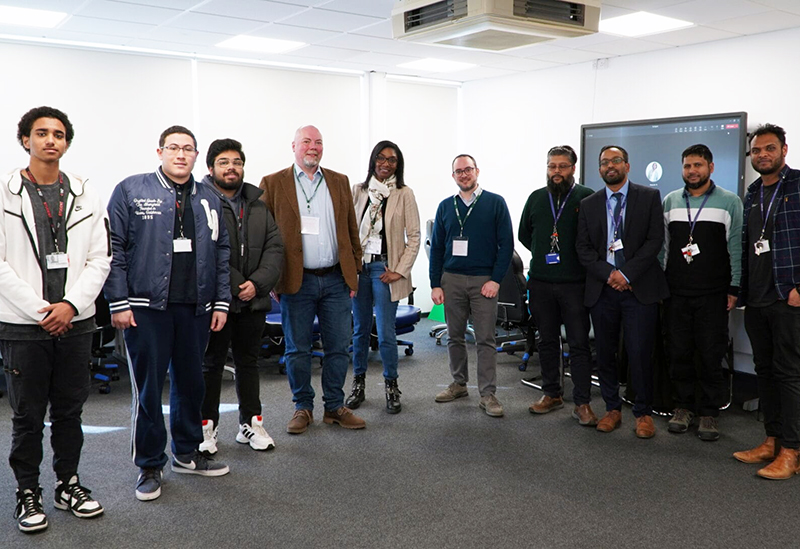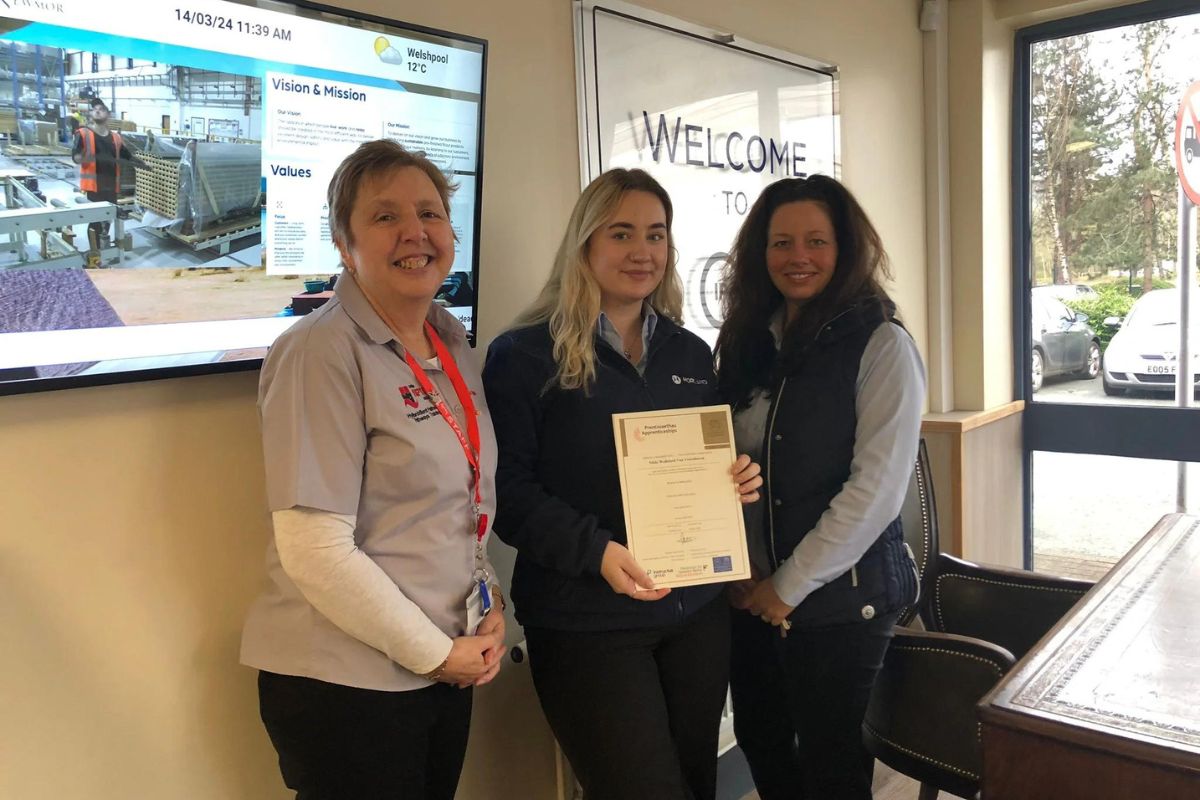Print technician

Reference Number: ST0309
Details of standard
Apprenticeship Standard for Print Technician
(Covering Pre-press Technician, Press Technician & Post-Press Technician)
Introduction to the Role
In a technologically-advanced and fast-changing industry, Print Technicians are responsible for effective physical reproduction of artistry, designs and projects to meet the practical needs of both customer and business. The printing industry plays a central role in marketing and communications, providing a physical product which is closely integrated into the multi-channel, multi-media and digital landscape.
A Print Technician produces a range of printed goods. They can efficiently and safely operate print machinery and equipment to produce print products according to the order specification and make sure it is produced on time. To do this they will need to know the different types of print materials and technologies, so they can make sure that standards including colour matching, print resolution, customer specification and individual company standards are met. In carrying out their role they know how to and can produce risk assessments and safely handle hazardous materials to ensure a safe working environment that complies with health safety and environmental requirements at all times. To manage the production process they are able to keep accurate records using both digital and manual processes as required, and can communicate and work effectively with others, including giving clear instructions to colleagues. They can operate complex machinery in the part of the production process for their specific job role and use their technical judgement to optimise production, maintain machinery and to resolve production problems and improve performance.
It is normal for Print Technicians to be employed at some stage in some or all of these roles within the industry. In general, they are expected to take responsibility for producing a job or order from the client, by taking the information received, and operating the specific types of machinery on which they have been trained. A Print Technician may also be required to supervise other operatives and so may have the opportunity to develop appropriate supervisory and management techniques.
A qualified Print Technician can apply their core skills and knowledge to develop into careers in production, sales and management in UK and worldwide print.
The Print Technician will have a strong core of knowledge covering the print production process, including paper science, pre-press, press and post-press, and will specialise and supplement this core knowledge by following one of the three options; Pre-Press Technician, Press Technician or Post-Press Technician.
Core Requirements for all roles: Knowledge, Skills and Behaviours
Knowledge required:
Understanding of the following:
- The printing and graphic communication industry and its markets.
- How the organisations in the printing industry work, including their culture, values, processes and how you fit in.
- Technical knowledge and print industry practices, processes & the materials used to carry out the occupation effectively, e.g. practices can include maintenance and continuous improvement; processes include printing, quality assurance and colour management; materials include mainly paper and board, but also plastic, metal and other materials.
- Pre-press, press and post-press processes and equipment and the commercial impact of their role e.g. ensuring that printed material is presented to post-press in perfect condition.
- Customers’ expectations in terms of order specification and timescales.
- Quality expectations and how they are managed.
- The print and graphic communications industry health, safety and environmental requirements and laws, including the Health and Safety at Work Act 1974.
- How best to solve problems and implement practical solutions in a timely manner.
Skills required:
Competent to do the following:
- Efficiently operate print machinery and equipment according to the order specification and timescale e.g. print a colour magazine onto paper within 2 hours to meet the production schedule; fold a leaflet to specification and timeframe.
- Follow a structured approach and methodology to identify areas for improvement, proposing and implementing solutions.
- Carry out work to required quality standards, targets and deadlines. Standards include colour matching, print resolution and matching customer specification and individual company standards
- Keep accurate records using both digital and manual processes as required.
- Comply with health, safety and environmental requirements at all times. This includes the Health and Safety at Work Act 1974 (e.g. produce risk assessments and safely handle hazardous materials).
- Communicate and work effectively with others, including giving clear instructions to colleagues.
- Implement practical solutions in a timely manner.
- Ability to supervise and instruct print operatives. Ability to take the lead as required.
Behaviours required:
- Willing to both listen and learn. Be dependable, reliable and flexible. Perform role in a safe manner by following company policies and guidelines.
- Work effectively with others in a team. Carry out work with integrity and discretion. Work with others to create improvements. Work with other departments and teams to provide support of a technical nature as required.
- Open to new ideas, i.e. new technologies and working practices.
- Follow process and procedures to ensure that work meets specifications. Report consistently and accurately.
- Communicate effectively and recognises the importance of good communication.
Options – To complete this standard, an apprentice must also complete one option: Pre-Press Technician, Press Technician or Post-Press technician.
English and Maths
Apprentices must achieve level 2 English and Maths prior to taking their end point assessment.
Level:
3.
Duration:
Typically 3 years.
Review Date:
3 years
Pre-Press Technician
A Pre-Press Technician is skilled in all the physical processes that occur before the printing and finishing stages. Pre-press is the first stage of production, and is the term used for the processes and procedures that occur between the creation of a print-ready design and the actual printing process. The set of procedures used in any particular pre-press environment is known as a workflow. Workflows vary depending on: the category of printing process; the final product (books, newspapers, product packaging); and depending on the printing method and the print product, the elements of the pre-press of a graphic print production can differ from case-to-case.
Those with a technical mindset and who have good attention to detail may find the role attractive due to the sophistication of the workflows and software, and the assurances of quality required before passing a job to production.
Knowledge required:
Understanding of the following:
- Creation of an output image carrier ready for onward production, i.e. a print-ready electronic file; plate; cylinder or screen).
- Production of plates, cylinders, screens and/or electronic files to the required production standard.
- Recognise the different company equipment and its associated needs in printing and finishing processes, so pre-press can support the other departments in meeting customer specifications effectively e.g. setting colour profiles accurately so the print technicians can set up their machines more effectively.
- Application of Colour Theory in the various industry processesg. quality assurance.
- Receipt, checking, and processing of digital files such as print-ready PDFs, database and colour/ink profile files.
- Reports and relevant paperwork for specified job/department to improve communication and demonstrate accountability.
- Design and production of creative digital artwork appropriate for print production.
- Planning and production of edited images ready for various software such as Adobe InDesign, Illustrator, Photoshop, QuarkXPress etc.
- How to check digital files and solve issues with software and work flow management such as colour profiling and data integrity.
- Creation of imposition schemes and job layouts
Skills Required:
Competent to do the following:
- Demonstrate proficiency in a range of pre-press, design, workflow management and business software packages e.g. ‘Screen True-flow’, ‘Adobe Creative Suite’ and ‘Tharstern’ .
- Convert customer files to print-ready files using various software and workflow packages.
- Send, receive and process digital files in the workflow, or e.g. using Adobe Creative Suite.
- Discuss job/design brief matters with the customer and provide advice on print-related issues where necessary.
- Use of scanning techniques to create digital images that are compatible with each company’s workflow management software and production requirements.
- Produce a printed or digital ‘proof’ (replicates what the final job will look like) for the customer from requirements defined by the customer.
- Manage digital colour reproduction in pre-press so that the Press Technician can set up and run effectively.
- Produce plates/screens/output files and materials to meet production schedule and machine requirements.
Press Technician
Printing is carried out using printing presses; typically the company’s most expensive and valuable machinery. There are 6 different categories of printing: lithography, screen, flexography, gravure, letterpress and digital. Each requires different techniques in order to operate successfully, and companies may use one or more categories of press depending on the customer needs. Job duties can vary according to machine type and technology, as well as by printing category.
Those with a mechanical and technical mindset may find the role of press technician attractive due to the complexity of the equipment and the wide array of continuous improvement methods which could be applied in a given situation.
Knowledge Required:
Understanding of the following:
- The employer’s printing machinery, including a detailed understanding of the full operating capabilities and limitations of the specific press type and printing process.
- Production processes including the cause and effect of pre-press issues on print and print issues on post-press.
- Presses are high-value capital equipment. Therefore an in-depth knowledge of how to prepare a machine for running, shut it down properly after running, and maintain long-term working effectiveness is essential.
- The properties and structures of materials, inks, toners, blankets, plates, cylinders and the various chemicals required for successful long-term operation and maintenance.
- Quality control expectations and techniques, costs, and other continuous improvement practises which increase the effectiveness of the printing process.
- How to safely handle, transport and store various materials and chemicals within the print working environment in line with company guidelines and the Health and Safety at Work Act 1974.
- How to complete all reports and relevant paperwork for specified job/department to improve communication and demonstrate accountability.
Skills required:
Competent to do the following:
- Set up, run and maintain a specific type of multi-unit printing press at the appropriate speed and at quality levels dictated by the work instructions and company guidelines. This can include cleaning and servicing key elements or preparing the machine for the next shift. If operating digital printing equipment must be able to handle variable data requirements
- Deal with a wide range of different printing operations such as managing colour, handling inks/toners, cleaning and maintenance, or operating different types of printing press etc.
- Run printing presses optimally. They must identify and solve problems to keep the machine in good working order and to ensure that jobs are produced on-time, in-full and without waste.
- Use visual and computer aids so that colour and product specifications are within the expected tolerances before running the job.
- Make sure that the press is ready for the next job or shift. The ability to work well as part of a team so that technical issues are understood by others as required.
- Work to tight deadlines in a calm and professional manner. Able to maintain disciplines and focus under pressure in line with company and customer expectations.
- Ensure that customer specification and company quality standards are met e.g. colour matching, print resolution, product consistency etc.
Post-Press Technician
Finishing is a general term used in the print industry to describe any processes after printing, usually in the final stages of creating a printed product. Through finishing, printed paper can be transformed into finished products such as books, booklets, catalogues, pop-ups and display units. Special techniques are applied as part of the finishing role by using pieces of individual equipment to perform separate tasks such as cutting paper to the correct size on a guillotine (known as an ‘off-line’ process). Larger machines can combine a series of actions, from cutting and folding the sheets into pages and gluing or stapling the sections together through to producing a fully bound book – this is known as an in-line process.There are also highly-skilled ‘craft finishers’ who use special tools and work with different materials such as wood, leather, fabric and metals including gold leaf. Examples of craft work include special edition or historic books, or high value promotional campaigns. Work may also be carried out in teams, with each performing different functions to hit the quality criteria and production schedule. Those with a flexible and practical mindset may find the role of post-press technician attractive due to the need to complete multiple processes using various techniques.
Knowledge required:
Understanding of the following:
- Pre-press and post-press processes and equipment and how their role will impact upon others.
- Properties and structures of materials, adhesives and various other chemicals and able to explain them in detail e.g. adhesives, laminates and paper.
- Physical properties of the numerous paper/plastic stocks and their benefits & constraints, including weight, grain direction, coatings and how this affects the final product.
- How to convert sheets into pages and products for example ‘sheet-work’, ‘work-and-turn’, and ‘work-and tumble’.
- How to safely and effectively convert the source materials (e.g. printed paper and gold foil) into the customer’s specific product (e.g. a special edition videogame pack) by using a combination of machinery and processes.
- The benefits and constraints of the many different folding types including parallels, gatefolds, barn door flap folds, and letter folds (wrap folds).
- How to apply different finishes to different substrates e.g. scented varnish, holographic foiling, soft-touch laminate, near-field communication sticker etc.
- How the final product is expected to perform and the process by which it is to be received by the customer.
Skills required:
Competent to do the following:
- Set up, run and maintain a specific range of finishing equipment at the appropriate speed and at quality levels dictated by the work instructions and company guidelines, such as: guillotines, stitching-trimming machinery, binding machinery, laminating equipment, die-cutters. This can include cleaning and servicing key elements or preparing the machine for the next shift.
- Deal with a range of finishing processes which may include varnishing, folding, embossing/debossing, foil blocking, scoring, packing, gluing, match & attach, tab & slot, sorting, banding, packing, wrapping etc.
- Operate finishing equipment optimally. Apply problem-solving skills & techniques to ensure that machinery is maintained in good working order and that the final product meets the specification whilst minimising wastage
- Accurately measure the finished product against customer specification and company standards e.g. folding accuracy, stitch alignment, foil position etc.
- Liaise with pre-press and press areas to ensure that customer timescales are met
- Handle and transport materials and other inventory within the finishing area working environment.
- Work to tight deadlines, in a calm and professional manner whilst achieving deadlines.
Crown copyright © 2019. You may re-use this information (not including logos) free of charge in any format or medium, under the terms of the Open Government Licence. Visit www.nationalarchives.gov.uk/doc/open-government-licence












Responses